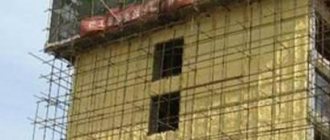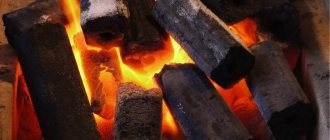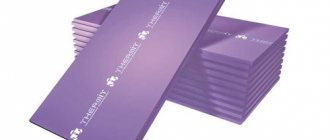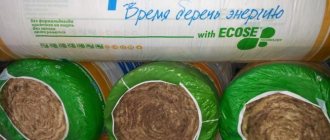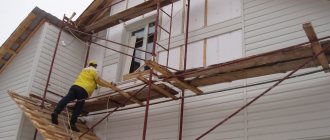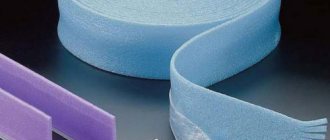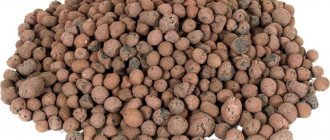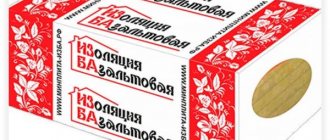Manufacturing technology
The raw materials for the manufacture of mineral basalt insulation are certain rocks. The most commonly used are basalt, dolomite, limestone, diabase, clay, etc. Manufacturing technology consists of two main processes:
1. Getting a melt.
2. Its transformation into thin fibers with the simultaneous introduction of binding components. Basalt fibers used in the manufacture of products usually have a length of 2 to 10 mm and a diameter not exceeding 8 mm. Actually, the basalt insulation itself is obtained in the process of melting rocks. The melting temperature tends to 1500˚С. In the next step, the fibers are bonded to each other using an inorganic binder (filtration sedimentation technique). Simultaneously with this process, pre-pressing is carried out, and everything is completed with thermal drying. As a result of all these actions, a basalt slab is obtained, the characteristics of which make it possible to use it in a wide variety of areas of industrial and civil construction.
Types and properties
There are two main types of basalt fiber - staple fiber and continuous fiber. One of the most important parameters of staple basalt fiber is the diameter of the individual fibers. Depending on the diameter, the fibers are divided into:
- micro-thin
, with a diameter of less than 0.6 microns; - ultrathin
, with a diameter of 0.6 to 1.0 microns; - super thin
, with a diameter of 1 to 3 microns; - thin
fibers from rocks, which is a layer of randomly located fibers with a diameter of 9 to 15 microns and a length of 3 to 1500 mm; - thickened fibers
with a diameter of 15 to 25 microns and a length of 5 to 1500 mm. They are obtained both by the method of vertical blowing of the melt jet with air (VRV) and by the centrifugal roller method; there is one known production of coarse fiber by centrifugal blowing method. Produced in the form of canvases, stitched mats, slabs based on various binders. Thickened fibers are widely used as a filter base for drainage systems of hydraulic structures; - thick
fibers - randomly arranged fibers with a length of 5 to 3000 mm, a diameter of 25 to 150 microns, a tensile strength of 120 to 650 MPa; - rude
fibers, - a relatively loose dispersed fibrous mass with a fiber length of 3 to 15 mm, a diameter of 150 to 500 μm, a tensile strength of 200 to 350 MPa, a specific surface of 28 to 280 cm2 / g. Fibers are corrosion resistant and can be used instead of metal for reinforcing materials based on binders.
The diameter of the fibers significantly affects the most important properties of products made from it: thermal conductivity, sound absorption, density, etc. The diameter of the fibers also affects the respiratory properties of basalt fiber. [2]
Basalt fiber made from natural stone has very good chemical resistance. Fibers with a diameter of 16-18 microns have 100% resistance to water, 96% to alkali, 94% to acid. The elastic modulus of the fiber is in the range from 7 to 60 GPa, the tensile strength is from 600 to 3500 MPa.
Characteristics Fibers of chopped basalt grade BS16 6 76 according to TU 5769-004-80104765-2008 [3]
| № | Indicators | unit of measurement | Norm | Test results | TYPE for test methods |
| 1 | Elementary fiber diameter * | micron | 15-17 | 16.3 | GOST 6943.2 |
| 2 | Fiber length | mm | 5-7 | 5.8 | GOST 10727 |
| 3 | Mass fraction of substances removed during ignition | % | not less than 0.6 | 0.9 | GOST 6943.8 |
| 4 | Moisture content | % | no more than 0.1 | 0.06 | GOST 6943.8 |
| 5 | Non-penetration | % | no more than 2.0 | 0 | — |
Scope of Basalt Slabs
Basalt mineral slabs today occupy one of the first places in terms of consumer demand. The main area of application is insulation and thermal insulation. The construction of residential buildings and structures, industrial facilities cannot do without this material. With the use of basalt slabs and cotton wool, thermal insulation of pipelines, plumbing and heating equipment is carried out. The same material is used to insulate surfaces inside and outside the premises: roofs, floors, walls, attics, basements.
Insulation is used as the bottom and top layer of sound insulation in flat roof ceilings.
Separately, a few words must be said about how to properly insulate the facade with a basalt slab. If the living space is sheathed from the inside, then condensation will form between the insulation and the wall due to the temperature difference, which favors the development of an aggressive biological environment (mold, flexible, etc.). But basalt slabs, laid outside the building along the surface of the facade, will retain heat in the room, prevent mold from developing and further improve the sound insulation of the entire structure.
Basalt insulation is widely used in industrial construction, in the energy industry (thermal insulation of boilers and furnaces at power plants). Basalt slabs and mechanical engineering do not bypass their attention. In this industry, basalt heaters are used for thermal insulation of chambers of furnaces and refrigerators, and car bodies.
Description and properties of basalt cardboard
Basalt cardboard, like cotton wool, is produced by extrusion. Extruder is an apparatus with holes of a given diameter through which the melt is forced. It can be a polymer mixture, glass. The volcanic rock basalt is also amenable to melting.
Penetrating through the holes of the extruder and blowing cold air on the reverse side, the melted strands of stone freeze. It remains to divide the fibers into segments of a given length, randomly crush them and compact them.
In mineral wool, the degree of compaction is different, but it does not reach the indicator of cardboard. In addition, cotton wool keeps its shape due to gluing basalt threads with phenol-formaldehyde resins, and cardboard - with bentonite clay.
The former are toxic, especially when heated. The heat provokes the evaporation of phenol - a neurotoxin. Under normal conditions, it is securely locked in cotton wool. But, there is always a risk of fire.
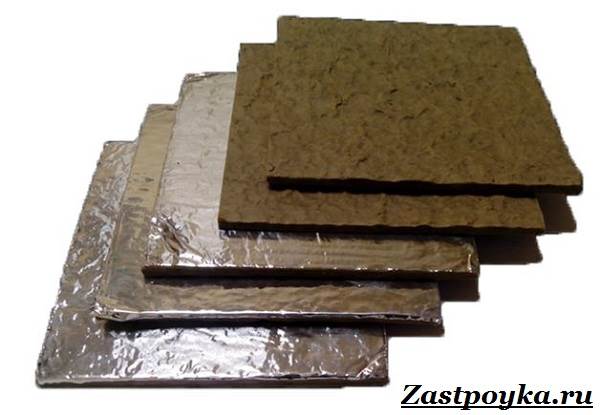
Phenol-formaldehyde resins do not belong to minerals, they are polymers. Bentonite clay in cardboard is the same stone as basalt. The rock consists of volcanic tuff crushed by the forces of weathering.
Its scientific name is montmorillonite. The mineral has a gray-white-pink color. The same is with bentonite clay. The basalt fibers bonded to it resemble asbestos cardboard. Asbestos is also a rock.
Its structure is initially fibrous. The threads of the stone are so thin that microscopic “needles” are not visible to the eye. On the other hand, filaments flying into the air are sensitive to the respiratory system. Asbestos enters the lungs without being excreted from them, damaging tissue, leading to disease. This was the reason for the ban on the use of asbestos.
Basalt cardboard application has free. Initially, the rock has a granular structure. After being remelted into fibers, the granules remain safe for health. It is also safe to keep the cardboard on fire.


If in mineral wool the heat resistance of basalt lies in the range of -200 - +1100 degrees, then the resin binder is in the range of -30 - +150 degrees Celsius. Not only is the evaporating phenol unhealthy. Also, the fibers of cotton wool remain without support, they begin to crumble, lose their shape.
Basalt cardboard characteristics is equal in both components. Clay is just as resistant to heat as the foundation of the sheets. Therefore, the cardboard is experiencing temperature surges, while maintaining the properties of the insulation.
Additionally, the material saves space. Basalt wool is several centimeters wide, and cardboard is only 5-10 millimeters. This is enough for high-quality heat and sound insulation.
The air capsules in it allow the hero of the article to retain heat and not let sound waves through. Clay does not fill all the space between the basalt threads. The gruel of tuff particles only holds the fibers together, and does not turn them into a kind of porcelain stoneware.
The remaining gas capsules inhibit sound and heat waves, since the air does not conduct them well. Being 100% mineral, the hero of the article is not of interest to insects and rodents. The absence of their attacks, as well as the mechanical resistance of the cardboard, allow it to serve for at least 50 years.
The density of the heat insulator allows it to withstand solid vibrations, and the mineral nature does not interact with chemical reagents such as acids, alkalis, sorley.
An additional advantage of basalt and clay cardboard is its moisture resistance. Where ecowool, perlite, or polystyrene swells, having lost its heat-saving properties, the hero of the article will remain a persistent "tin soldier".
Therefore, basalt cardboard is purchased for the construction of baths, saunas, basements. However, we will talk about the areas of application of the material in a separate chapter. First, it is worth examining the types of the hero of the article. The scope of its operation partly depends on the type of cardboard.


Density of material
Modern manufacturers offer customers mineral basalt slabs with a density ranging from 35 to 200 kg / m³. For various types of construction work, materials with different indicators are used. For example, for laying on an inclined roof, the density of basalt slabs should not be less than 30-40 kg / m³. Otherwise, over time, the thermal insulation will sag. For insulation of the outer walls of buildings, experts recommend using basalt slabs with a density of 80 kg / m³. In interior partitions, to improve sound insulation, a material with a density of 50 kg / m³ is used.
Insulation layer thickness: which is best?
The answer to this question is quite simple. The retention of heat indoors depends on two characteristics: the thickness and density of the slab. Therefore, the thicker the insulation, the better, and the denser, the warmer. For example, for a residential attic 150 mm is the required minimum thickness. In this case, the basalt slab must have a density of at least 30-40 kg / m³. Insulation layer for external walls is usually at least 100 mm thick.
In general, in order to create the conditions in the living space regulated by GOST 30494-96 (air temperature in the range of + 20-22˚С, relative humidity - 30-45%, no drafts), it is important to use basalt thermal insulation materials correctly.
Basalt cardboard price
Basalt cardboard price associated with a number of factors. First, the type of material plays a role. Foil sheets are usually 15-20% more expensive than conventional sheets. Also, the cost depends on the size of the mats. The most demanded ones are 125 centimeters long, 60 centimeters wide and 1 centimeter thick.
The least common in stores is cardboard 0.6 cm wide, 1 meter long and 60 wide. One such sheet costs 150-190 rubles without foil and 170-220 with an aluminum layer.
Another pricing parameter is the thickness of the basalt thread itself. It can be super thin and medium section. The first option is more expensive. True, super-thin fibers melt easier.
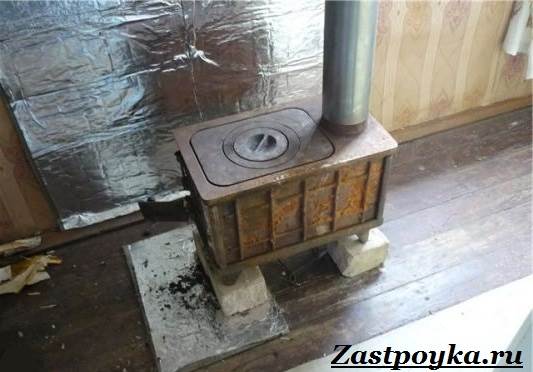

Heat resistance can be reduced to 700 degrees. Therefore, for use in extreme conditions with temperatures above 7 hundred Celsius, medium-fiber board is used.
For bulk purchases of basalt sheets, you can count on discounts. At retail, mats are more expensive. Plus, the price is influenced by the name of the manufacturer. Reputable brands ask for more for the product, and little-known companies lower the price tag.
This is a consequence of competition and the desire to occupy a niche in the market. Having established themselves, firms also raise the price tag on cardboard.Now, it’s not a price race, but a quality competition.
Is a stove and wool the same thing?
As mentioned above, the first stage in the production of basalt slabs is called melt. In order to give the basalt fibers more fluidity, from 10 to 35% of a mixture or limestone can be added to the melt. Such components will reduce the resistance of the material to high temperatures and the influence of an aggressive environment. It cannot be said that a product with such a component composition is a natural basalt slab. Rather, it is basalt mineral wool.
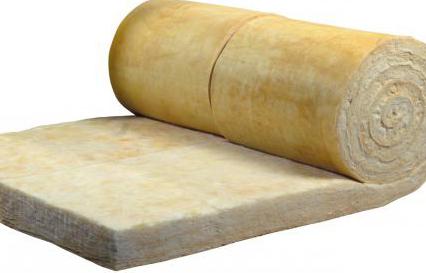

However, it would be wrong to think that rock wool has a much worse performance than a slab. The material can withstand temperatures up to 600˚C (up to 1000˚C - changes color, higher - melts). Thermal conductivity of cotton wool is in the range of 0.042-0.048 W / m². The material is resistant to mechanical stress.
Basalt insulation
So, basalt, from which basalt insulation is made! What do we know about him? Let's try to question him.
- Place of birth: volcanoes located in Kamchatka and the Kuril Islands, India and the USA, Hawaii, Etna and Vesuvius volcanoes. It can be found in the form of interstratal bodies, or in the form of lava flows, it has a lot of relatives, that is, it is the most common natural stone
- Appearance: Since the basis of its composition is formed by feldspar and augite, basalt can be charmingly different - black and smoky, greenish-black and dark gray.
Characteristics:
- density - 2530-2970 kg / m3
- specific heat - 0.85 J / kg * K at 0 ° С
- resistance - from 60 to 400 MPa
- water absorption in the range from 0.25 to 10.2%
- Poisson's ratio - 0.20-0.25
- melting point in the range - 1100-1250 ° С, in some specimens it can reach up to 1450 ° С
Chemical and mineral composition
The mineral components are: volcanic glass, microliths of plagioplasses of titanomagnetite, magnetite and clinopyroxene.
In addition, the basalt may contain orthopyroxene and hornblende.
There are various types of inclusions, so one of them is distinguished by a small number of pyroxene prisms, which are black in color, and the other by the presence of isometric olivine crystals, the color of which is marsh-yellow.
Sometimes a quarter of the total mass is made up of inclusions, and the structure of the mineral itself is glassy, aphyric or porphyry, cryptocrystalline, the most common accessory mineral is apatite.
Another of the varieties is amygdaloid basalt. Since basalt is a rock of volcanic origin, it is extracted mainly from the lava flows of the volcano. Bubble pieces are mined from the upper part of the lava. When the lava cools down, gases and vapors come out of it, therefore the structure of the mined stone is akin to a sponge, the holes formed are eventually filled with minerals, the most "common" of which are calcium, zeolite, prehnite and copper.
Application area:
- for the production of mineral wool basalt thermal insulation boards
- directly as a building stone
- as a facing and decorative stone plays the role of an insulator, it is used for external finishing of buildings, as it is very resistant to atmospheric influences.
- road stones are made from it, street sculptures are cast, and also crushed stone and acid-resistant powder are obtained.
What is the reason for such a wide range of applications? Of course, those wonderful qualities that basalt has, and generously endows them with those building materials that are produced from it.
These are, firstly, excellent indicators of heat and sound insulation, resistance to high temperatures and fire resistance. Basalt insulation has high strength, durability, is not afraid of acids and alkalis, is environmentally friendly, vapor permeable, dielectric, and also has a truly wonderful property - abrasion resistance.
Production of basalt and its derivatives mineral wool slabs
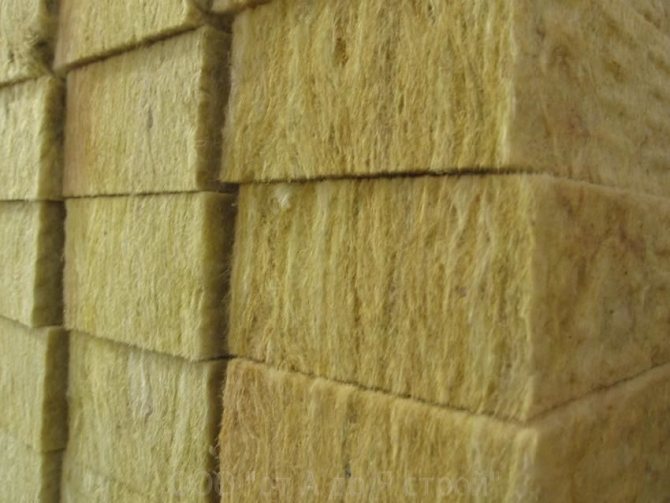

Basically, the only thing that can be said about the "production" of basalt is that it is carried out by the mining industry.
The stone is mined in special mines or quarries, and on the basis of this stone a variety of products are produced.The range of application of these products is very diverse, but we will try to list only the main aspects:
- in the form of bachalt mineral wool slabs on a synthetic binder - used for insulating buildings and roofs, fireplaces, stoves, braziers, insulation of power units, low-temperature equipment units for extracting nitrogen and creating oxygen columns, for insulating any structure for any purpose in general, that is without limiting production activities.
- in the form of mats and rolls for heat and sound insulation of pipelines.
- Molten basalt is used to create various building materials, for example - facing tiles, of a wide variety of shapes and sizes, battery stands, insulators for high voltage networks. Even basalt powder finds its application and is used for the production of "pressed" reinforced products.
Now we will try once again to note for ourselves the most famous basalt products:
- basalt based heaters
- basalt finishing tiles
- basalt chimneys for stoves and fireplaces
The most common types of basalt
The most famous trade mark belongs to one of the varieties of basalt called Thermobasalt. Since the days of Ancient Rome, this material of Italian origin was mined near the capital of the country, it was used mainly for architectural purposes. In terms of strength it is not inferior to granite, its decorative qualities are comparable to those of limestone, the material retains the richness of the color palette for a long time. It is surprising that with such advantages, the price of Thermobasalt is lower or does not exceed the price of other brands.
The next kind of basalt has a more "moderate" price and a modest - dark gray color. It is called “Asian”. Just like the previous brand, it is widely used for "architectural" and "design" purposes.
Possession of a rich dark green hue, with additional various inclusions, often of the most breathtaking colors, distinguish "Mauritanian green basalt". Its appearance is "unusual", while all the physical and mechanical characteristics inherent in other brands are preserved, only the criteria for frost resistance and hardness are somewhat lower.
And one more species is the "Twilight Basalt" imported from China. It is the strongest in terms of wear and "frost-resistant" of all varieties of this material, also has a high resistance to negative weathering, has a black or smoky gray color.
What do we see? All types of basalt differ from each other by a variety of indicators, but first of all it is the color and structure.
Use basalt mineral wool slabs, you will not be disappointed!
Noise insulation characteristics of slabs
Basalt fibers in the structure of the material are located randomly in different directions, due to which basalt slabs have good acoustic characteristics. In a room with such a heater, the likelihood of vertical excitation of sound waves is significantly reduced. The airborne sound insulation and sound-absorbing characteristics of the walls and ceiling in the room are improved. The reverberation time is significantly reduced (a gradual decrease in the sound intensity with its multiple reflection).
We can say that these heaters (basalt slab, cotton wool) effectively soundproof the room from noise both from the inside and outside of the building.
Environmental friendliness of basalt heaters
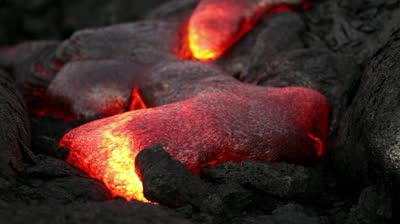

Basalt and limestone, which are used to make slabs, are natural materials. Basalt - once poured out from the bowels of the Earth and frozen magma. This material is perhaps the most widespread on the earth's surface at the present time.Limestone is a sedimentary rock formed from calcites. Insulation with basalt slabs actually allows you to save energy reserves a hundred times more than is spent on their production: extraction, processing, transportation.
Strength and hydrophobicity parameters
Basalt fibers inside the slabs are randomly located, which allows to achieve sufficiently high stiffness values of the insulation. Considering that in the production process, binder components are also added to the composition, we can talk about excellent strength parameters and characteristics of the product. And the mineral basalt slab is able to maintain such strength over a long period of time.
Manufacturers today are ready to offer potential buyers both lightweight insulation grades for working with unloaded structures, and rigid basalt slabs. The latter are able to withstand serious loads. The strength characteristics of basalt insulation are such that slabs and mineral wool can be used in any existing building system of sound insulation and insulation. They will provide the most effective quality of protection and durability of structures.
The hydrophobicity (water repellency, the ability to avoid contact with water) of basalt slabs is ensured at the production stage by adding hydrophobizing additives to the melt. As a result, the basalt slab acquires excellent water-repellent characteristics, has a rather low water absorption, which ultimately has a beneficial effect on the thermal conductivity coefficient (it decreases). That is, the less a basalt slab is saturated with water, the lower this indicator is.
Advantages and disadvantages of the material
Basalt fiber fire protection has several important advantages over other mineral materials. In addition to effectively protecting buildings and structures from fire and smoke, this material protects surfaces from strong vibrations and destruction. Basalt fibers are vibration-resistant. They contain no harmful components (resins and phenols), therefore, even when exposed to high temperatures, the material does not emit toxic substances. Basalt does not become a rodent bait, because it does not contain limestone and dolomite.
Roll material made from basalt fibers is endowed with the following qualities:
- durability;
- resistance to chemicals, solvents, acids and alkalis;
- good hygroscopicity throughout the entire period of use;
- good sound insulation and thermal insulation properties;
- resistance to high temperatures (up to 900 ºC);
- low thermal conductivity (only 0.038 W / m * K);
- the ability to maintain fire protection functions for up to 0.75 hours from the start of combustion;
- small thickness, light weight (this material will not burden the structure);
- complete absence of a tendency to burn.
In fact, basalt fire retardant rolls are a versatile material that combines thermal insulation, sound insulation and fire protection properties. A wide range of basalt fire protection allows you to choose the optimal modification of the material for each customer.
In order for the material to be reliably and well fixed, the surface must be thoroughly cleaned of dust and covered with a layer of primer.
The only drawback of the described fire-fighting material is considered to be the high exactingness of basalt sheets to the surface. In order for the product to be securely and well fixed, it must be thoroughly primed and free of dust.
How not to be mistaken when choosing a grade of material?
To choose the right insulation, before buying, you need to decide on the area of application, think about what kind of work you need a basalt slab.The characteristics of any brand will be effective only when used for a certain type of work. For example, if it is supposed to use a material where there will be no increased loads on it, it is quite acceptable to use soft grades of a heat insulator. Such places include facade ventilation systems, wall insulation in high-rise buildings (but not higher than 4 floors).
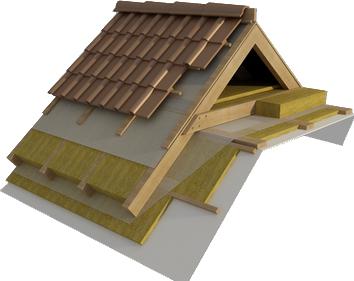

To insulate a multi-storey building in which a ventilated facade with an unlimited air flow rate is finished, it is better to use semi-rigid types of basalt slabs. Experts recommend using rigid brands of insulation in those places of construction sites where heavy loads are expected.
Reinforcing mesh
Basalt reinforcement meshes are designed to reinforce roads and highways in order to extend the service life of asphalt. This is achieved by reducing the effect of cracking in the asphalt concrete road surface caused by traffic intensity, concrete hardening over time, and temperature cycling.
The service life of the asphalt between repairs can be significantly extended. Reinforcement with basalt mesh makes it possible to reduce the thickness of the asphalt-concrete pavement by 20%. Typical pavement temperatures will not cause any loss of strength or deformation in the basalt mesh, as would be the case with synthetic material.
Basfiber® significantly outperforms synthetic materials in its ability to withstand low temperatures, which is extremely important for roads and highways in the northern regions.
Danger to people
Is the harm caused by basalt slabs to human health a myth or reality? In order to give a certain shape to a slab or a mat made of basalt, manufacturers add formaldehyde (resin) to the composition of the insulation. A priori, the latter are considered harmful and dangerous substances for the human body. And in mineral wool, these resins are freely available. If water gets into the insulation, decomposition processes begin there, and the toxic substances released at the same time enter the human body. However, in certified plants, formaldehyde resins and phenol are in a bound state by the time the insulation is made and are absolutely inert to the environment. Hence, we can conclude that basalt mineral wool slabs are harmful to humans and the environment only if they were made from low-quality materials and handicraft methods. Such insulating materials, of course, do not comply with sanitary standards, contain many harmful impurities and are dangerous to humans.
If we are talking about the harm from getting the smallest particles of basalt slabs into the respiratory tract or under the skin, then this is practically impossible. Modern basalt heaters are very durable, their fibers are soldered to each other, and the separation of small particles is not possible. In this, basalt insulation is much safer than materials of past generations, for example, such as glass wool.
Comparison criteria
To clarify the positive and negative aspects of fibrous thermal insulation, objective factors are used that affect the availability of purchase, the quality and duration of use, safety for human health:
- type of raw material;
- production technology;
- form factors of finished products;
- the cost of the mat, roll or plate;
- specifications;
- safety measures applied to work with the material.
First, about the general and positive aspects. For the production of glass wool and stone wool, natural raw materials are used: in the first case - silicate sand, in the second - igneous rocks. Modern equipment allows the use of broken glass, which can be the main component for glass wool cloth.
The technology for obtaining finished products is similar: the raw materials are melted in furnaces with a temperature of 1300-1600 C, then sprayed onto the finest threads and pressed into several layers. Finished canvases are reheated to 230-250 C.
The difference between the different types of mineral wool can be seen in a separate table:
| Material name / criterion | Basalt wool | Glass wool |
| Fire resistance | up to +700 С | up to +450 C |
| Shrinkage capacity | low, high vibration resistance | high (after exposure to moisture) |
| Types of finished products | mats, rolls, plates | mats, rolls, plates |
| Density | 80 ± 20 kg / cubic meter | up to 13 kg / cubic meter |
| Life time | up to 50 years and more | 5-10 years |
| Possibility of using for insulation of residential premises | Limited (for products with toxic binders) | Impossible (due to the physical properties of the insulation fibers) |
| Cost (for example, 1 sq.m. slab) | 140-170 rub. | about 60-65 rubles. |
Which is safer? The safety of thermal insulators needs to be discussed separately, since both types have their drawbacks. Glass wool consists of thin and brittle microfibers, which are destroyed during installation and during operation. Glass dust penetrates clothing and can damage the eyes and skin on exposed areas of the body. Inhalation of glass wool particles can impair the function of the lungs and airways. That is why technical norms and rules recommend the use of overalls and protective equipment - heavy overalls, protective masks, respirators, goggles and gloves.
For the production of most varieties of basalt wool, manufacturers use binders based on bitumen, formaldehyde resins and combined components. When heated, they are capable of releasing substances harmful to health into the atmosphere. There is an alternative for the listed thermal insulators - basalt materials created using innovative technologies.
Development perspective


Already today, the basalt slab is widely used in various spheres of human life. Currently, this insulation occupies one of the leading places in the field of construction. Even though the production process of basalt insulation is quite energy-intensive, this material is available to a wide range of consumers with completely different financial capabilities. And, as you know, the optimal combination of the price of a product and its quality is the path to success and recognition.
Products
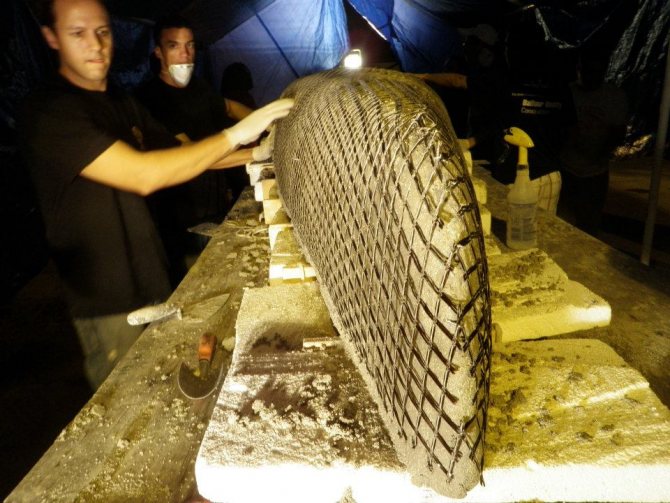

The use of basalt fabric has become widely known in various fields - from the construction industry to tailoring.
Such products include:
- fire curtains for localizing fire and protecting against fire;
- filter material for dust collection chambers and factory chimneys;
- protection against destruction by fire of the roof;
- fire resistant clothing;
- composite reinforced materials;
- electromagnetic screens.

